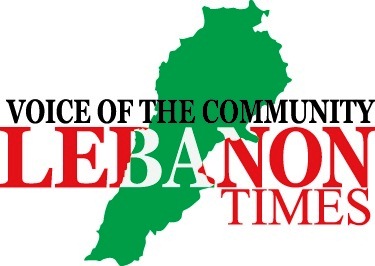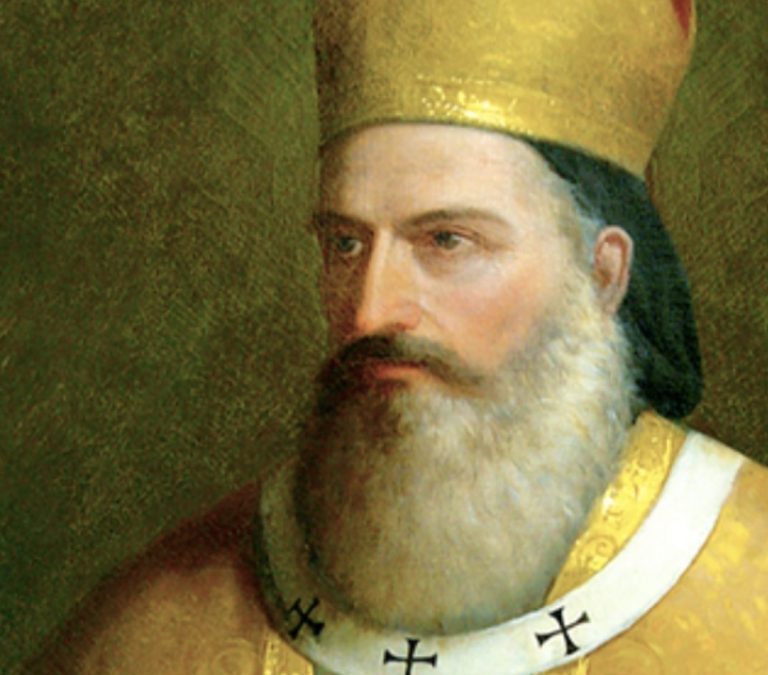Patriarch Estephan El Douaihy of Ehden is one of the most prominent figures in the history of the Maronite Church and Lebanon. He played a significant role in strengthening the Christian faith and developing the Maronite Church during a challenging period in history. He was beatified on August 2, 2024, at the patriarchal headquarters in Bkerke in the presence of 12,500 believers, including bishops, monks, priests, a large gathering of Maronites, and Cardinal Marcello Semeraro, a representative of the Vatican and Pope Francis. This event marked a recognition of his virtues and his spiritual and social contributions.
- Birth and Early Life
Estephan El Douaihy was born in the town of Ehden in northern Lebanon on August 2, 1630. He was raised in a religious family known for its commitment to faith and social responsibilities. His father passed away when he was just three years old, so his mother sent him to the village school to learn the basics of Syriac and Arabic and to be nurtured in the principles of faith and morality. From an early age, he showed signs of academic excellence, a strong sense of piety, and a zeal for the house of the Lord.
- Studies in Rome
At the age of eleven, he arrived in Rome and enrolled in the Maronite College, where he displayed great brilliance in theology and philosophy. He mastered Latin, Greek, and Hebrew, excelled in logic, mathematics, and eloquence, and was distinguished in philosophy. In 1648, he lost his eyesight due to excessive studying and reading, but miraculously regained his vision after seeking the intercession of the Virgin Mary at a church.
During his studies, he wrote numerous letters and essays reflecting his deep religious thought and profound understanding of Christian doctrine.
He graduated with distinction and returned to Lebanon.
- Return to Lebanon
El Douaihy’s return to Mount Lebanon was delayed due to the lack of travelers, so he immersed himself in research in the libraries of Rome, exploring everything related to the history of his church and his country. Despite the insistence of his acquaintances that he stay in the West, El Douaihy was determined to return to his homeland to serve his church and people. On March 25, 1656, Patriarch Yuhanna Safrawi ordained him to the priesthood at the altar of the Monastery of Saints Sarkis and Bacchus in Ehden. He began preaching to the people, serving the parish, and conducting spiritual exercises.
- Establishment of St. Jacob of the Ethiopians School – Ehden
In 1657, El Douaihy renovated the Monastery of St. Jacob of the Ethiopians in Ehden and took up residence there. He founded a school to teach boys the basics of Syriac and Arabic and to raise them in faith and morals.
- Patriarchate and His Works
In 1670, the Maronites and notable figures of the country gathered at the Monastery of Our Lady of Qannoubine and elected Bishop Estephan as Patriarch, despite his reluctance. He led the church with wisdom and steadfastness amid many challenges and difficulties until his death in 1704.
- Church Reforms
Patriarch El Douaihy introduced significant changes in the administrative and liturgical systems of the Maronite Church. He founded many schools and educational institutions and supported the movement of translation and publication to provide religious and educational books for the Maronite community.
- Social and Political Activities
El Douaihy played a prominent role in the social and political life of Lebanon, striving for social justice and the protection of Christian rights. He acted as a mediator to resolve disputes between various groups within Lebanese society.
- His Writings
Patriarch Estephan El Douaihy left behind a rich legacy of writings on religious and historical topics. Among his most notable works:
History of the Maronite Community: This book is considered a fundamental reference for the history of the Maronite Church, documenting the events and developments that the community underwent.
Liturgical Books: He worked on revising and editing many of the liturgical books used in the Maronite Church, contributing to the improvement of worship and religious services.
Theological and Philosophical Manuscripts: He authored numerous manuscripts on theological and philosophical subjects, focusing on the Maronite heritage and the teachings of the Church.
- Miracles and Wonders
The miracles and wonders associated with Patriarch Estephan El Douaihy played a significant role in his beatification process. Among these miracles:
Healing the Sick: There are numerous testimonies of people being cured of incurable diseases after praying to Patriarch El Douaihy.
Rescue from Danger: Several stories indicate that the Patriarch miraculously intervened to save people from dangerous situations, such as natural disasters and wars.
Inspiration of Spirituality: Many believers reported experiencing inspiring spiritual moments after praying to the Patriarch, leading to the strengthening of their faith and spiritual connection.
- His Illness and Passing (1704)
On April 19, 1704, he left Keserwan and arrived in Qannoubine, where he fell ill upon arrival. On May 3, he passed away while repeating, “Praise God in the heavens, praise Him in the heights.” His funeral was attended by bishops, monks, priests, and a large gathering of Maronites, and his body was laid to rest in the Cave of Saint Marina.
- Beatification and Its Significance
On August 2, 2024, Patriarch Estephan El Douaihy was beatified in a grand religious celebration in Lebanon. This beatification reflects the Catholic Church’s official recognition of his virtues and holiness and honors his significant contributions to the development of the Maronite Church and the promotion of unity among believers.
- His Legacy and Lasting Impact
Patriarch Estephan El Douaihy left a rich legacy of reforms and religious and historical writings. His influence remains alive in Lebanese society and the Maronite Church. He is considered a symbol of religious and national unity and an example of sacrifice and enerosity.
Patriarch Estephan El Douaihy of Ehden remains
an enduring symbol in the history of Lebanon and the Eastern Maronite Church.

